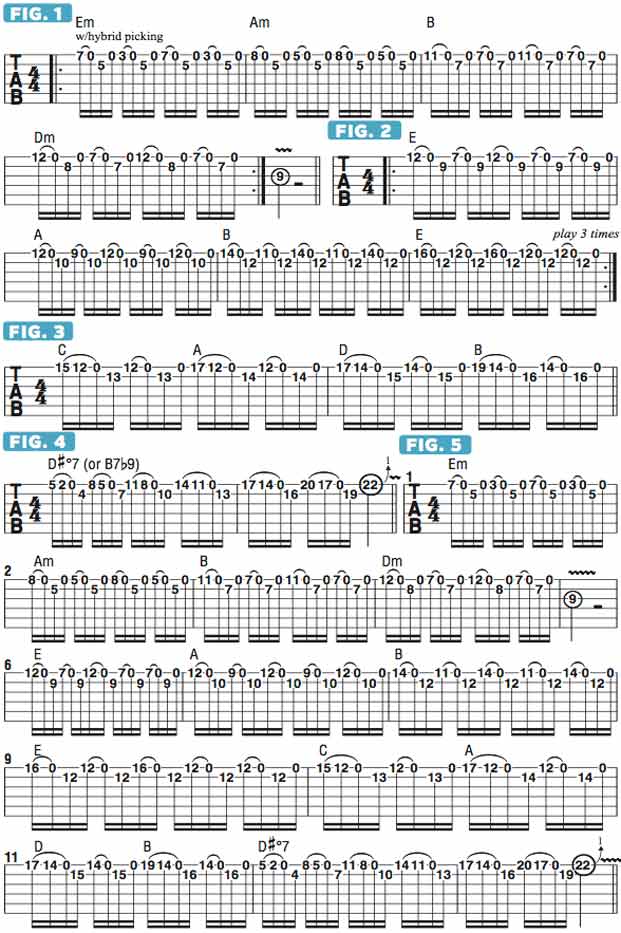Using a Pedal Tone to Forge Fast, Keyboard-like Phrases
How to use a signature element in baroque classical music to great effect in your own playing.

A signature element in baroque classical music is the use of a technique known as pedal point, whereby a note is either held or played repeatedly against other melodic notes.
The technique was used brilliantly by J.S. Bach in his violin sonatas and partitas, which are considered essential study for all serious classical musicians.
Many rock guitarists, such as Steve Morse and Yngwie Malmsteen, have sighted the value in studying and adapting these pieces to the electric guitar and have utilized the pedal point technique to great effect in their own music.
All the examples in this month’s column are performed on the top two strings, with the open high E functioning as a pedal tone throughout. On the guitar, incorporating open strings in this way enables one to play fast, keyboard-like phrases that would otherwise be much more difficult to execute.
In FIGURE 1, I begin with pairs of four-note figures in a four-bar pattern, with two bars in which both open and fretted E notes are alternately sounded during each beat. I employ hybrid picking here, fingerpicking the last 16th note of each beat and flatpicking all the others. Bar 1 outlines an E minor triad (E G B) while bar 2 moves up the fretboard to A minor (A C E). In bar 3, I shift up further to sound the notes of B minor (B D# F#), sounded along with the open high-E pedal tone, and in bar 4 I resolve back to E minor with a higher triad voicing, or inversion.
In FIGURE 2, I switch to E and A major triads while also moving into three-note patterns that fall on beats one through three of each bar, with a different shape rounding out beat four. In this example, the first note in each four-note group is fingerpicked. FIGURE 3 offers another permutation of the basic idea, with a double pull-off sounded on beats one and three of each bar. The triadic references now are C, A, D and B and change every two beats.
In FIGURE 4, a double pull-off is employed on every beat, consisting of a three-note pattern that includes the open high E string. The shapes ascend symmetrically in minor thirds, or three-fret jumps, on each successive beat, with the first note of the beat falling initially at the fifth fret, then the eighth, 11th, 14th, etc. I think of this sound as D#dim7, but it may also be analyzed as B7b9, functioning as the five chord in E minor.
Now let’s run all of these ideas in sequence, resulting in the challenging 12-bar pattern illustrated in FIGURE 5. It’s tricky to move smoothly from shape to shape, so be sure to take it slowly, concentrating on how best to combine the musical puzzle pieces.

Get The Pick Newsletter
All the latest guitar news, interviews, lessons, reviews, deals and more, direct to your inbox!









![Joe Bonamassa [left] wears a deep blue suit and polka-dotted shirt and plays his green refin Strat; the late Irish blues legend Rory Gallagher [right] screams and inflicts some punishment on his heavily worn number one Stratocaster.](https://cdn.mos.cms.futurecdn.net/cw28h7UBcTVfTLs7p7eiLe.jpg)
